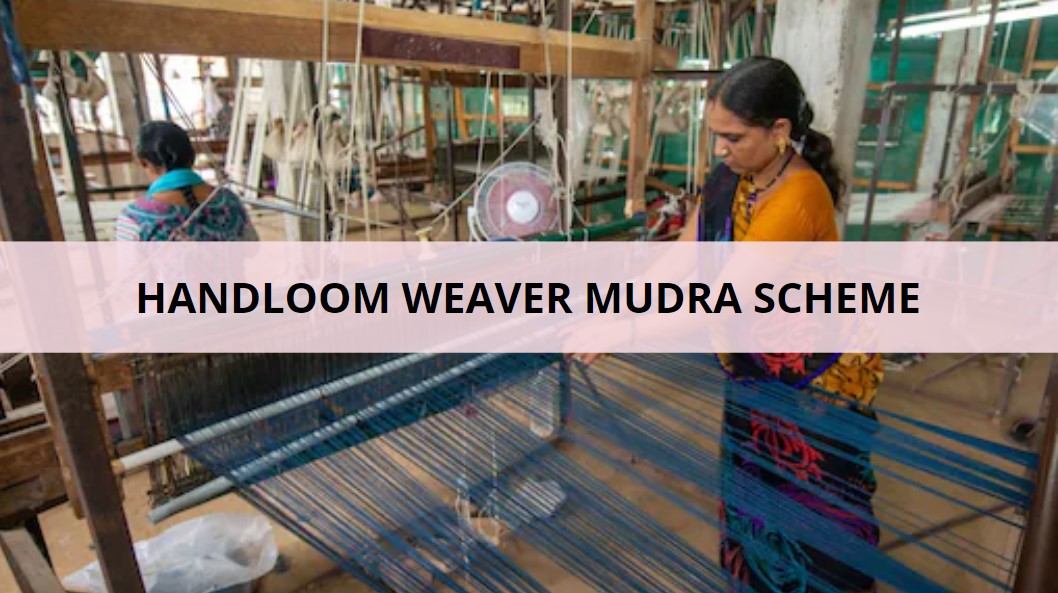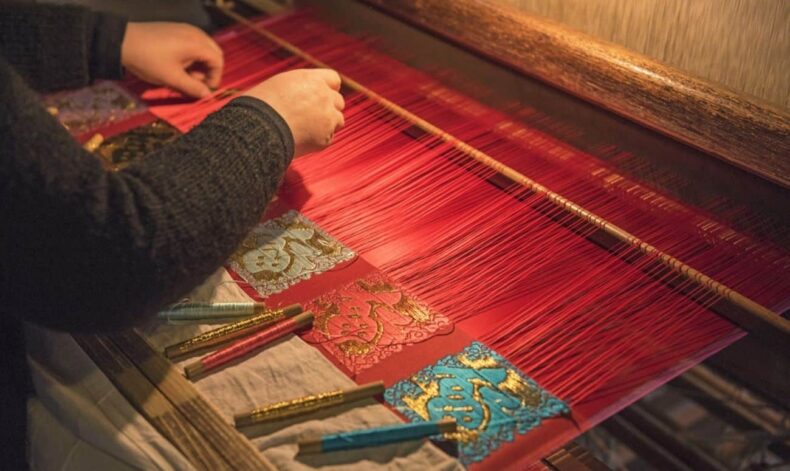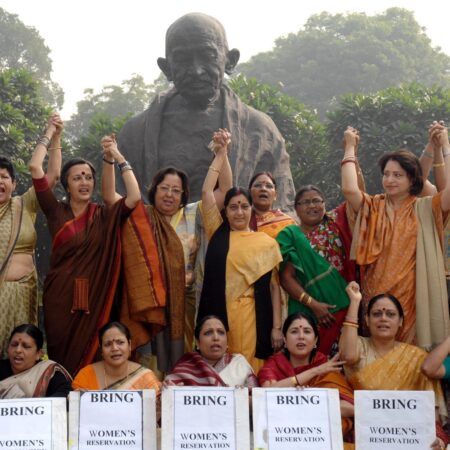Handloom textiles are an indelible part of India’s cultural legacy. When it comes to providing for people’s daily needs, the handlooms industry is second only to agriculture. Indian handlooms have the ability to attract wealthy consumers in both the domestic and international markets due to the artistic value they provide to the product. However, the industry faces a number of challenges, including but not limited to: low productivity; an unorganised production system; a narrow product range; a lack of innovative products; a lack of working capital; a lack of a strong marketing connection; a general stagnation of production and sales; fierce competition from the mill sector; and so on.

The Indian government is conducting the following programmes for handlooms development and weavers‘ welfare: Up to Rs. 2.00 crore per BLC is allocated for skill upgradation, Hathkargha Samvardhan Sahayata, product development, workshed building, project management costs, design creation, and setting up a common facility centre (CFC). A district-level dye plant can receive up to Rs. 50 lakh in financial aid. State government recommends the suggestions.
Hathkargha Samvardhan Sahayata (HSS) provides looms/accessories to weavers to boost production and quality of handloom products. Under the scheme, the Indian government pays 90% of the loom/accessory cost and the beneficiary pays 10%. Weavers’ Service Centre releases the government’s portion to suppliers. Handloom Marketing Assistance – To help handloom agencies/weavers promote their products directly to consumers, States/eligible handloom agencies receive financial aid to organise marketing events in local and abroad markets. Weaver MUDRA Scheme: handloom weavers get 6% interest credit. Weavers receive up to Rs. 10,000 in margin money and a 3-year credit guarantee. MUDRA Portal was established with Punjab National Bank to speed up margin money and interest subvention disbursements.
Ministry of Textiles has inked MoUs with IGNOU and NIOS to provide education for handloom weavers and their children. IGNOU offers continuing education programmes through accessible and flexible learning opportunities relevant to the professional objectives of handloom weavers and their children. SC, ST, BPL, and women from handloom weavers’ households can get 75% of their NIOS/IGNOU course fees refunded. “India Handloom” brand for high-quality handloom items. It promotes high-quality, authentic handloom items with zero defects and minimal environmental impact.
E-COMMERCE- A policy framework was established to promote e-marketing of handloom items. Any willing e-commerce platform with a strong track record can participate. 23 e-commerce companies are marketing handloom products online. In big cities/towns, URBAN HAATS are put up to provide direct marketing to crafters/weavers and avoid middlemen. 39 Urban Haats have been approved nationwide.
Handloom Weavers’ Comprehensive Welfare Scheme (HWCWS)

It provides life, accident, and disability insurance through PMJJBY, PMSBY, and Converged Mahatma Gandhi Bunkar Bima Yojana (MGBBY).
Yarn Scheme (YSS) National Handloom Development Corporation implements the initiative to make all varieties of yarn available at Mill Gate Price.
• The scheme reimburses freight and gives depot operational charges @2%.
• Cotton, domestic silk, wool, and linen hank yarn with quantity caps receive a 10% price subsidy. The government has taken several initiatives to promote handloom workers:
• The Indian government announced AatmaNirbhar Bharat Abhiyaan in 2020 to grow the economy and make India self-sufficient. Various sectors received credit relief. Eligible weavers and Handloom groups received reliefs and loan support to restore their companiesSource:  Source: UDYAM
Source: UDYAM
• States and UTs have been asked to purchase handloom weavers’ finished product. Weavers can now sell their products directly to government agencies through the Government e-Marketplace. 1.5 lakh weavers have joined GeM. Concessional Credit/Weaver MUDRA Scheme provides financial aid.
Margin aid: @20% of loan amount, max Rs. 25,000/weaver. @20% of loan amount (@Rs. 2 lakh for every 100 weavers/workers) every handloom organisation. Up to 7% interest subvention for 3 years and 3-year credit guarantee
• Handloom weavers don’t get free electricity. Under the National Handloom Development Programme, Solar Lighting Units (HSS) are distributed (NHDP).
Problems and Worries in Handloom Sector and way out
Industry fragmentation Instigations from those in authority loom large. Growing Chinese imports. Past its usefulness, technologies such as these are now obsolete. Disorganized manufacturing process. Negative output. Shortage of liquid assets caused by the lack of financial services among the weaving community (76 percent of weavers have no access to banks). Standardized product line. Insufficient business and financial literacy among weavers.
Unreliable sales channels (64% of all sales are made locally) prevent weavers from making a living wage. Overall output and sales have been flat n Sixty-seven percent of weavers have monthly incomes of less than Rs. 5,000. Due to low wages and a lack of government assistance, less people in the younger generation are taking up weaving as a profession. This has reduced the number of weavers from 43.3 lakhs in 2009-10 to 35.22 lakhs in 2019-20.
The majority of weavers get their yarn from private vendors rather than the government or cooperatives. Profit margins are slimmed down by the open market cost of acquiring yarn. Inadequate online resources for acquiring genuine handloom items.













